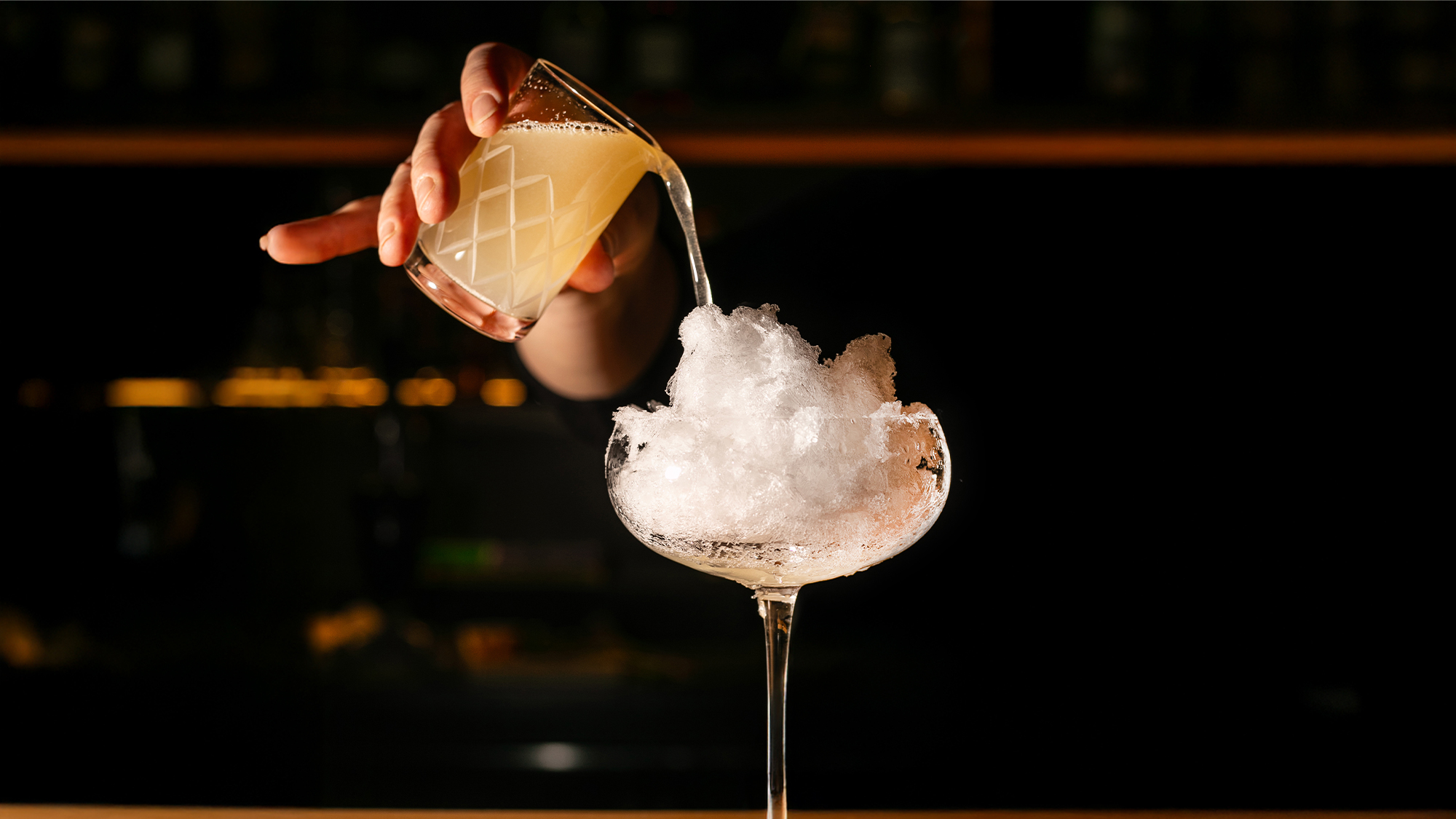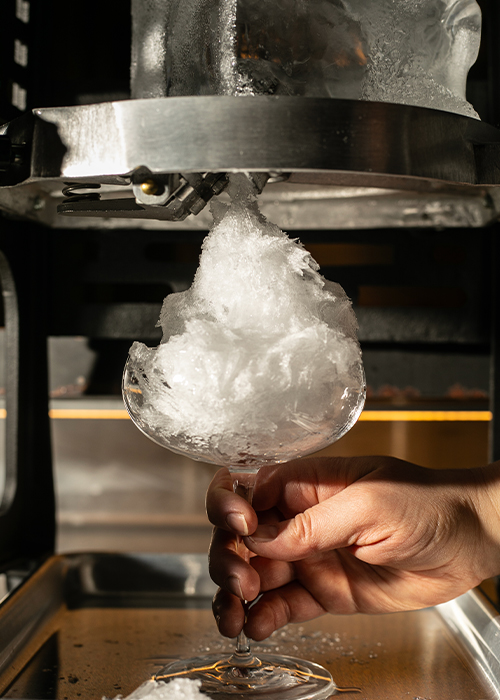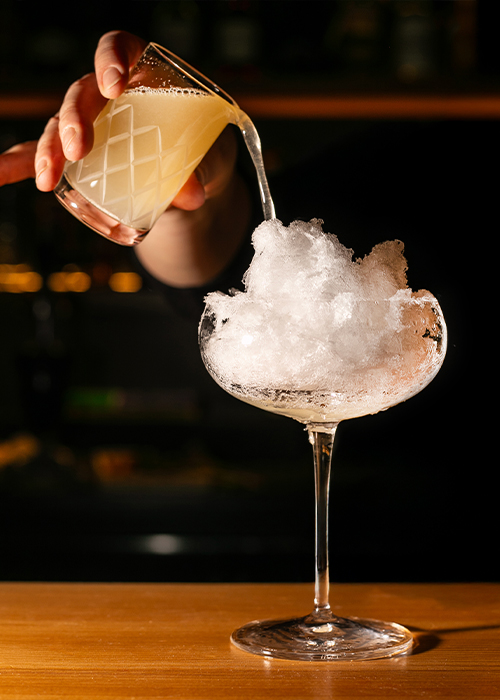


The Daiquiri is one of the bar world’s most polarizing cocktails. For some, it evokes the image of the slushy, fruit-flavored frozen drink, whipped up in a blender beachside. And for others it brings to mind the simple, shaken cocktail made with lime juice, sugar, and rum. While purists will insist that a true Daiquiri only exists in the latter form, the real story behind this cocktail — or family of cocktails, rather — is complicated.
The root of this dispute can be traced back to the historic Havana-based bar El Floridita, which is renowned for its many riffs on the cocktail. In the mid-1900s, bartender Constantino Ribalaigua Vert, known locally as Constante, experimented with the drink, making a series of numbered variations on the classic. Some would add a splash of Maraschino or Cointreau and others would play around with the use of ice — he is even credited with the invention of the frozen Daiquiri.
The popularity of this iteration spiraled out of control to the point where it became synonymous with the cocktail itself. In response to an era of syrupy, sweet strawberry Daiquiris, industry pros have spent the past decade or so trying to convince bargoers that Daiquiris aren’t just a frozen drink to have on vacation.
In the debate over whether the Daiquiri is meant to be served up, on ice, or in frozen form, New York City’s newly opened Bar Kabawa’s answer is: all of the above. The East Village Daiquiri and wine bar embraces the many facets of the cocktail with a menu dedicated to riffs on the classic. Designed by creative bartender Kathryn “Pepper” Stashek, the list of Daiquiris includes a vibrant Bay Leaf version and a Jerk Daiquiri with thyme, allspice, and habanero. There’s even an ode to an El Floridita classic, the Floridita #3, a frozen drink with rum, grapefruit, and Maraschino. But the most intriguing of the bunch might just be the Kabawa Daiquiri — the bar’s take on the traditional three-ingredient drink. True to the original form, it’s a mixture of rum, lime juice, and sugar, but it stretches the simple ingredients into a showstopping cocktail experience.
While most bartenders reject the idea of serving a Daiquiri on ice, it’s central to Kabawa’s house style. When a guest orders the Kabawa Daiquiri, Stashek heads over to a medieval-looking machine with a massive block of ice and turns the crank, spinning the cube over a blade. The thin shavings delicately land in a large coupe glass below, slowly piling up into a snow cone-like mound.

This technique is an homage to El Floridita’s playful use of ice. “The drink speaks to the history of the Daiquiri,” Stashek says. “If you go back and look at Constantino’s original recipes from El Floridita bar, one of the big differences between each drink was the kind of ice that was used, for both service and preparation.” Some were served over chipped ice, and that’s what Bar Kabawa channels here.
Stashek then combines the other components of the drink. She uses a mix of Key and Persian lime juices and organic cane sugar. After much trial and error, Stashek decided to use granulated sugar instead of making a syrup for the drink, using a milk frother to dissolve the sugar into the lime juice.
“For speed and efficiency’s sake we tried to do it with a simple syrup, and we found that we really liked the flavor of the granulated sugar better, ” she says. “That bigger, bolder flavor works with the icy coldness and the extra dilution you’re getting in there.” She then adds the rum — guests have a choice between the more classic Probitas Rum or the more savory, herbaceous Montebello Rhum Blanc. Stashek gives the ingredients a quick dry shake and pours the mixture into a carafe.
The ice and liquid are kept separate until the last second. It’s not until the glass arrives in front of the guest that Stashek pours the mixture into the coupe, slowly — and dramatically — melting the tall tower of shaved ice. The resulting drink is invigoratingly crisp, but the bold, verdant flavors of the rum and tangy lime shine through the cooling ice.

For those still skeptical of the icy preparation, Stashek insists that the meticulous recipe is designed to prevent overdilution, with safeguards in place every step of the way — the team even weighs exactly how much ice is in the glass for every drink. And overall, she believes the ultra-fine snow ice leads to an optimal Daiquiri experience in both temperature and flavor.
“I’m happy to drink Daquiris that are shaken and served up, but if you don’t drink them very quickly they start to get warm,” she says. “The shaved ice is a little more forgiving if you want to spend more time with it. I think that it keeps the drink at an optimal flavor and dilution level from start to finish.”
*Image retrieved from Andrew Bezek
The article The Key to Bar Kabawa’s House Daiquiri? Snow Ice. appeared first on VinePair.